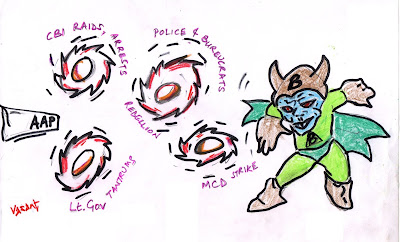The Ayodhya Tapestry: Weaving Together Faith, History, and Politics
In the intricate tapestry of Indian politics, where the warp of history intertwines with the weft of contemporary governance, the construction of the Ram Temple in Ayodhya emerges as a vivid thread, highlighting the confluence of faith, identity, and power politics. As we delve into this narrative, it's impossible not to reflect upon the perspectives of eminent historian Romila Thapar, whose scholarly work, although increasingly marginalized in public discourse, offers a nuanced understanding of India's past and its echoes in the present.
Romila Thapar’s Lens: Deciphering the Past, Understanding the Present
Thapar, a historian who has navigated the complex waters of Indian history with an admirable blend of scholarly rigor and a critical eye, has often been at odds with the mainstream narrative, especially concerning her interpretation of historical events like the attack on the Somnath temple by Mahmud of Ghazni in the 11th century. Her contention, grounded in Persian writings and local chronicles of the time, alongside debates in the British Parliament, suggests that such invasions were less about religious fervor and more a manifestation of political power struggles. This perspective seems contentious which I particularly don't ascribe to, yet it invites us to look beyond the surface of historical events and understand the multifaceted motivations that drive human actions.
The Architectural Manifesto: Ram Temple as a Symbol of Political Ascendancy
Modi, ruling over a continent-sized country, has skillfully made Varanasi his electoral fortress, thus anchoring his political saga in a city of immense religious significance to Hindus and just 200 kms away from his bastion of Varanasi. The emotive appeal to the reconstruction of the Ram Temple, framed within the narrative of a resurgent Bharat emerging from the shadows of the Babri Masjid movement, is a masterstroke of blending religious sentiment with nationalistic fervor. It's a testament to how temples, and by extension religious symbols, are not just places of worship but potent instruments of political authority and identity.
A Thousand-Year Vision: Modi’s Narrative of National Rebirth
The Prime Minister's vision of scripting the next thousand-year story of India, with the Ram Temple as a cornerstone, is not merely an architectural endeavor but a symbolic reaffirmation of his political stature and the ideological underpinnings of his governance. It reflects a conscious effort to mold the collective memory of the nation, to anchor it in a narrative that champions cultural resurgence as a vehicle for political consolidation.
In this context, Thapar's analytical framework invites us to question and explore the layers beneath the surface of what might seem like purely religious or cultural milestones. It encourages a deeper understanding of how historical narratives are constructed and employed in the service of contemporary political agendas. While one may not align with all of Thapar's viewpoints, her approach to history - as a dynamic interplay of power, politics, and identity - provides a valuable lens through which to view the unfolding of events like the construction of the Ram Temple in Ayodhya.
History in the Making: The Role of Religious Symbols in Power Dynamics
In the grand theatre of Indian politics, where the past is perpetually interlaced with the present, the Ram Temple stands not just as a symbol of religious devotion but as a monument to the enduring legacy of power politics. It's a reminder that in the quest for political dominance, the manipulation of historical narratives and religious sentiments remains a potent tool, wielded with strategic precision by those in power. As we navigate this complex landscape, the insights of historians like Romila Thapar offer us a contrarian view, indicating us towards a more nuanced understanding of the forces that shape our world










